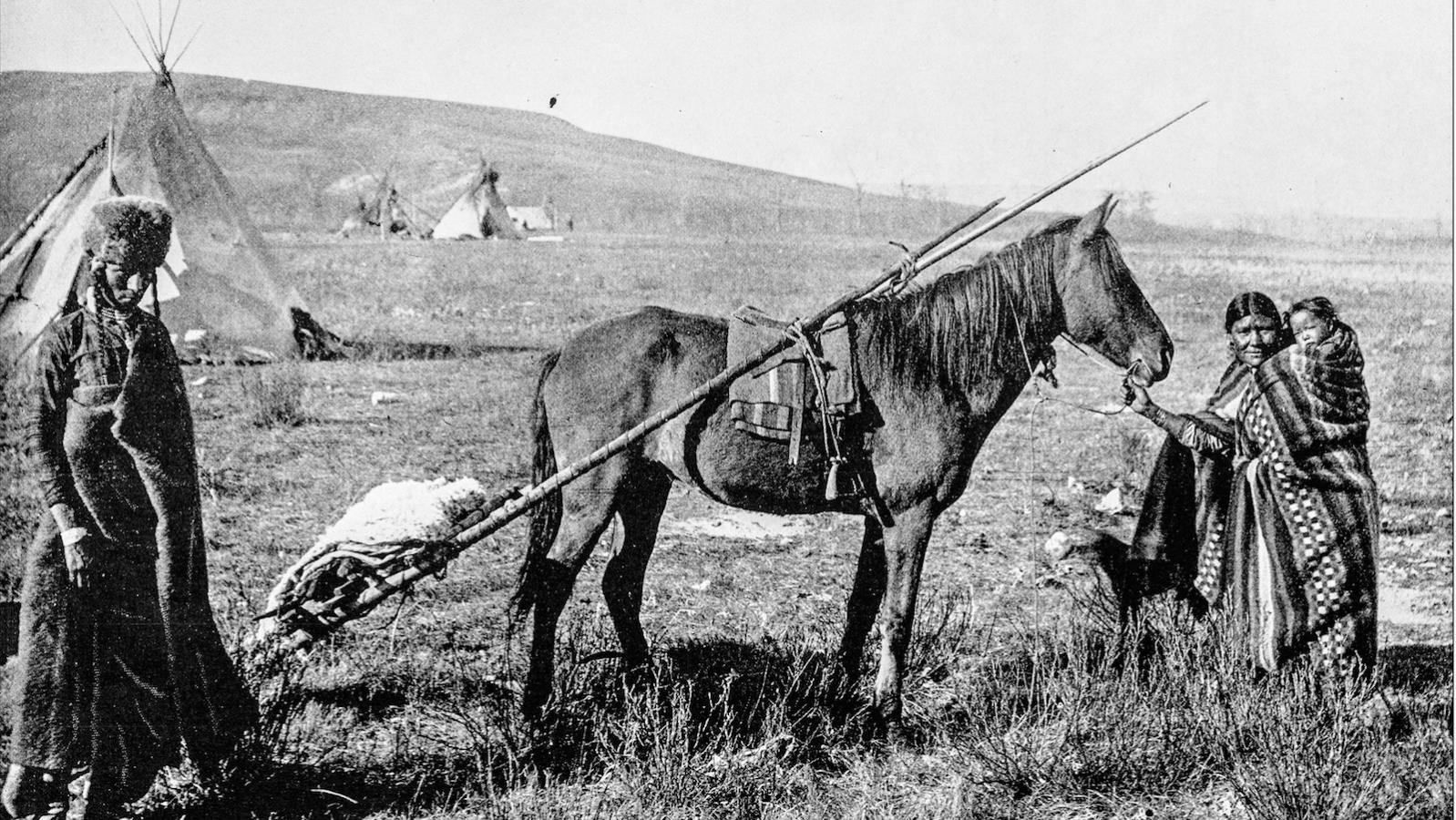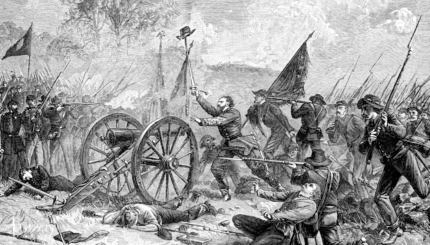In the 8th century BCE, the Assyrians dispersed the Kingdom of Israel, giving life and legend to the Lost Tribes. The repatriation of these lost tribes eventually became an integral part of the Jewish–and Christian–messianic dream, and there have been Lost Tribe speculations about numerous “discovered” populations. One the most fascinating — and unfortunately forgotten — such discussions centered on the Native Americans. How did American Jews respond to this? Why and how did Jews credit or discredit it? What did these theories signify about American Jewish agendas and anxieties?
A Theory is Born
One of the first books to suggest the Native American Lost Tribe theory was written by a Jew, the Dutch rabbi, scholar, and diplomat Manasseh ben Israel. In The Hope of Israel (1650), Ben Israel suggested that the discovery of the Native Americans, a surviving remnant of the Assyrian exile, was a sign heralding the messianic era. Just one year later, Thomas Thorowgood published his best seller Jewes in America, Or, Probabilities that those Indians are Judaical, made more probable by some Additionals to the former Conjectures. The Lost Tribe idea found favor among early American notables, including Cotton Mather (the influential English minister), Elias Boudinot (the New Jersey lawyer who was one of the leaders of the American Revolution), and the Quaker leader William Penn.
The notion was revived after James Adair, a 40-year veteran Indian trader and meticulous chronicler of the Israelitish features of Native American religion and social custom wrote The History of the American Indians…Containing an Account of their Origin, Language, Manners, Religion and Civil Customs in 1775. Even Epaphras Jones, an American Bible professor engaged the theory in 1831, claiming that anyone “conversant with the European Jews and the Aborigines of America… will perceive a great likeness in color, features, hair, aptness to cunning, dispositions for roving, &s.”
Religious Connotations
Some of these writers were interested in Native American history, but most of them were just interested in the Bible. Indeed, the Lost Tribe claim should be seen as part of a general 19th-century fascination with biblical history. Explorations of Holy Land flora and fauna, the geography of the Holy Land, the life of Jesus-the-man, were very much en vogue. A close identification among some 17th and 18th century Americans with the chosen people of Scripture helped Christian settlers see their colonization of New England as a reenactment of Israel’s journey into the Promised Land.
It also contributed to a more general religious myth-making scheme that helped define the national identity of the United States. To cite just one example, in a 1799 Thanksgiving Day sermon, Abiel Tabbot told his congregation in Massachusetts:
“It has often been remarked that the people of the United States come nearer to a parallel with Ancient Israel, than any other nation upon the globe. Hence, ‘OUR AMERICAN ISRAEL,’ is a term frequently used; and common consent allows it apt and proper.”
A curious incident that drew considerable attention and “proved,” at least to some, that Native Americans had ancient Israelite origins unfolded when tefillin (phylacteries) were “discovered” in Pittsfield, Massachusetts in the early 19th century. Their discoverer wrote that this “forms another link in the evidence by which our Indians are identified with the ancient Jews, who were scattered upon the face of the globe, and to this day remain a living monument, to verify and establish the eternal truths of Scripture.”
Prominent Jews Respond
Around the time of the Pittsfield tefillin incident, Mordecai Manuel Noah, the journalist, playwright, politician, and Jewish American statesman, began spilling ink about the subject. Noah wrote a play She Would be a Soldier; or, The Plains of Chippewa (1819), that resolved the tension between the Yankees and the British by identifying the Indian Great Spirit with the God of the Bible. Noah’s ideas about Jewish-Native affinities grew in a distinctly political manner when he invited Natives Americans to help settle “Ararat,” the separatist Jewish colony he hoped to establish on Grand Island on the Niagara River around 1825.
Noah’s writings on Jewish Natives came to their full expression with his Discourse on the Evidences of the American Indians Being the Descendants of the Lost Tribes of Israel (1837). The work documented a host of theological, linguistic, ritual, dietary, and political parallels between Jews and Native Americans. Most importantly, he identified several essential character traits shared by the two peoples, all of which were, of course, highly laudable. For Noah, the conflation of Indians and Jews sanctioned the latter as divinely ordained Americans.
Another notable Jewish-Indian incident occurred in 1860, when stones hewn with Hebrew inscriptions were found near Newark, Ohio. The story unfolded over the course of many months and was followed closely by The Israelite, The Occident, and The Jewish Messenger, whose respective editors represented the intellectual vanguard of American Jewry. Isaac Mayer Wise, the leader of the Reform movement in America, employed philological proofs to undermine the stone’s authenticity. He rejected any connections between Jews and Native Americans, though it’s notable that he bothered to engage the story at all. Isaac Leeser, a traditionalist, sided in favor of the Lost Tribes theory. Reviewing the relics in question, The Occident, Leeser’s newspaper, concluded, “The sons of Jacob were walking on the soil of Ohio many centuries before the birth of Columbus.”
Implications
From a historical and scientific point of view, the Native American Lost Tribe claim is clearly narishkeit (Yiddish for foolishness). But even a brief exploration of it — who was making it and why, who was refuting it and why, reveals important insights about American Jewry. Popular thought about who Jews were — their place in America, with whom they could or should be associated — helps us understand how Jews negotiated their place in American society. Theories about Ancient Israelite Indians should not be dismissed as mere fantasy. Rather they are important precisely because they are fantasy.
Jews responded to the Lost Tribes claim about Native Americans in sermons, plays, public statements, scholarly works, and popular writings. The critical responses are more understandable: from the perspective of Reform and science, the theory is flagrantly nonsensical. But there are other reasons some may have rejected it: so as not to be associated with that which was thought of as native, primitive, and barbarian, so as not to be thought of as atavistic or lower on the evolutionarily ladder than other Europeans, so as not to be thought of as imminently disappearing from history, and so as not to be in need of Christian civilizing (i.e. missionizing). Advocates, on the other hand, had to go against the scholarly consensus and side with religious figures who could be dismissed as fanatics.
Accepting Native Americans as ancient Israelites held several — sometimes mutually exclusive — implications for American Jews. Foremost, it meant that the Indians were, in some way, related. It could buttress the sentiment that America was the New Jerusalem. This was the destined place where the original exiles, scattered to unknown corners of the world, were ingathered to their God-chosen Promised Land. They were not “lost” at all. Rather, the near aboriginal connection of Jews to the American soil served as evidence of the end of exile, and another reason to support a new American Jewish identity.
Many of the major figures in 19th-century American Jewry weighed in–in one manner or another–on the Jewish-Indian controversy. The practical stakes were never high, but the claim — so ubiquitous and so fluid (since it was used for so many different functions by so many different people) — was taken seriously and fretted over by Jewish leaders of very different orientations. The Lost Tribe theory had significant symbolic stakes — for Jews, Christians and Native Americans. Linking America and its earliest inhabitants with the Bible and its theology, meant staking a claim on America–and championing God’s plan for the New World.
tefillin
Pronounced: tuh-FILL-in (short i in both fill and in), Origin: Hebrew, phylacteries. These are the small boxes containing the words of the Shema that are traditionally wrapped around one’s head and arm during morning prayers.



